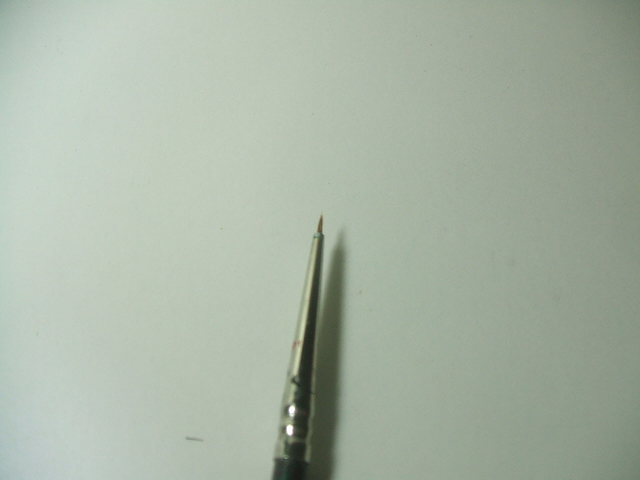
Brush Painting 101: Lesson 4
The secret to brush painting has two parts. Part one. Get the right paint. I’ve done some reviews where I’ve tried to point out some good paint. Revell Aqua Color is best, followed by Testors Model Master Acryl, Badger Model Flex, and/or Tamiya or Vallejo Model Air in a pinch.
Part two. Good brushes made from animal hair, usually identified as “sable.” They don’t have to be expensive brushes, but they have to be “good.” That means, basically, that they should consist of nice fine straight hairs that do not fall out.
But, just as important, is that the brushes should be SMALL. Small brushes are good. A number 2 brush is a medium sized brush. A number 4 is large. A 1 or a 0 is more typical of what I use for most paint jobs. For painting canopies, you need something really, really small. This is a 10-0.

Most problems in brush painting come from using a brush that is too large and then using it carelessly. Trying to paint something small with a big brush is not a good idea. The only exception to this is the application of Future where you really need a large, flat brush and then scrub it on.
That more-or-less applies to Vallejo Metal Color also.
But in general, you can learn to use a brush to get an acceptable finish if you use a small brush and the right paint. Then all you need to do is set you mind on the right path and you’re home free. The biggest obstacle to overcome is the perception that you can’t do it. Once you have slain the inner dragon, you’ll be able to do it–but only when you believe that you can.
This type of model building has many, many benefits, but perhaps the most important is the way it works against perfectionism and discourages bad vibes from nit-picking and hyper-competitive forum trolling.
So just pick up a small brush– and feel the groove.